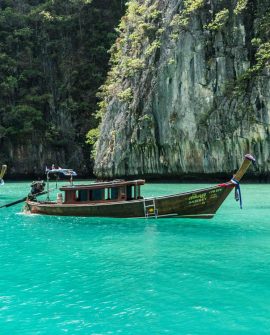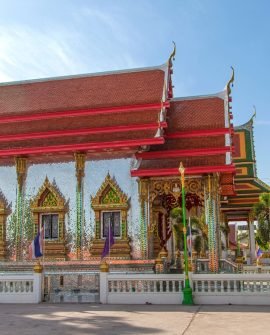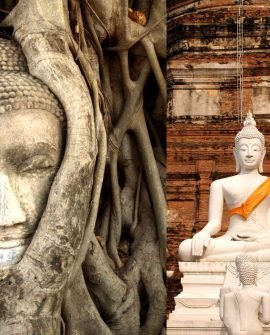Explore the enchanting province of Kanchanaburi with our Kanchanaburi tour packages. Located in western Thailand, Kanchanaburi is a captivating destination known for its rich history, natural beauty, and cultural treasures.
With our Kanchanaburi tour packages, you can embark on a journey that combines historical significance with breathtaking landscapes. Discover the iconic Bridge over the River Kwai, a poignant reminder of World War II, and learn about the harrowing stories of the Thai-Burma Railway. Visit the War Cemetery and the JEATH War Museum to gain deeper insights into the region’s wartime past.
Immerse yourself in nature as you explore the Erawan National Park, home to the magnificent Erawan Waterfall with its emerald-green pools. Take a refreshing dip in the cool waters and enjoy the tranquil surroundings of lush forests and wildlife. The Sai Yok Noi Waterfall and the Hellfire Pass are also worth exploring, offering scenic beauty and historical significance.
Experience the unique floating markets of Kanchanaburi, where you can engage in the vibrant local culture and sample delicious Thai street food. Take a boat ride along the River Kwai and witness the picturesque scenery unfold before your eyes.
For those seeking adventure, Kanchanaburi offers opportunities for jungle trekking, bamboo rafting, and elephant encounters. Explore the dense jungles and encounter the majestic wildlife of Thailand in their natural habitat.
Discover the cultural heritage of Kanchanaburi as you visit ancient temples like Wat Tham Sua and Wat Ban Tham. These temples showcase exquisite architecture and provide a glimpse into the spiritual traditions of the region.
With our Kanchanaburi tour packages, you can customize your itinerary to suit your interests and preferences. Whether you’re a history enthusiast, nature lover, or adventure seeker, Kanchanaburi offers a diverse range of experiences for every traveler.
Book your Kanchanaburi tour package now and embark on a memorable journey through this captivating province. Explore its historical sites, immerse yourself in its natural wonders, and create lifelong memories of your time in Kanchanaburi.









